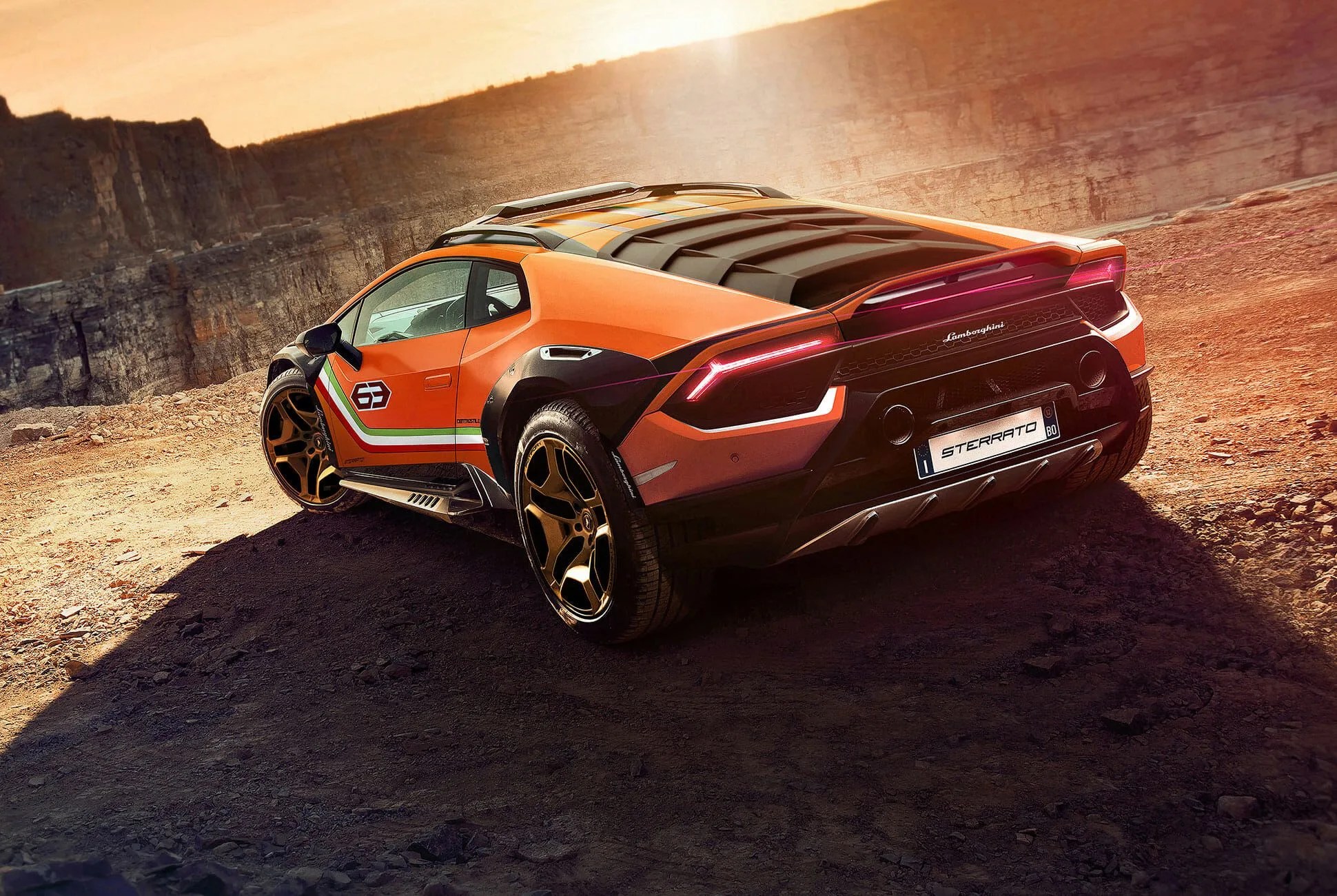3 photos
There’s no denying the appeal of a sports car, but if there’s one main strike against them, it’s that they’re, well…impractical. Even if you can make do with their generally-cramped interiors, the low-slung bodies, stiff suspensions and rubber-band tires that make them such a treat on tracks and smooth asphalt can make them a bear to drive on rough pavement, let alone the occasional dirt road or sojourn off the beaten path that we all need our cars to make from time to time.
But what if there was a better way? What if you could have a super sports car with all the requisite style and performance required to earn the title, but also offering the all-terrain prowess of an SUV?
Insane? Maybe yesterday. But not today, because today is the day Lamborghini unveiled the Huracan Sterrato: the world’s first real off-road sports car.
The Aventador may be the range-topper that leaves passers-by slack-jawed, but by pretty much all objective measures, the Huracan is by far the superior car: pretty much just as quick, far more drivable, and far less expensive, too boot. The Sterrato is based on the new Huracan Evo, the facelifted version of the mid-engined sports car that debuted in 2018. For Sterrato use, the Evo’s marquee feature — the advanced Lamborghini Dinamica Veicolo Integrata powertrain management system that uses predictive logic to apportion power and adjust the suspension faster than ever — has been retuned for off-road purposes, serving up torque in a way that helps it better handle loose surfaces and helps the driver stabilize oversteer, the better for making them look like a hero during rally-spec drifts.
Of course, computer tweaks will only get you so far; any true off-roader needs mechanical modifications, as well. The most obvious changes to the Huracan Sterrato lie at all four corners, where thickly-sidewalled off-road tires on 20-inch wheels lie beneath fenders equipped with black cladding that disguises the 1.18-inch increase in wheel track. The Sterrato rides 1.85 inches higher than the stock Huracan, thanks to its revised suspension; the departure angle increases by 6.5 percent, although the approach angle only increases by 1 percent, so you might want to
Power is unchanged versus the regular Huracan Evo; there’s still a 5.2-liter V10 cranking out 631 horsepower and sending it to all four wheels via a seven-speed dual clutch gearbox. But the powertrain’s now shielded from harm by aluminum skid plates on the underbelly and stone-deflecting composite bodywork encircling the engine. The air intakes and mud guards are made from a combination of elastomeric resin and carbon fiber, while aluminum-reinforced side skirts add extra armor. A roof-mounted LED light bar and a pair of LED bumper lights throw extra illumination down the trail after the sun goes down.




